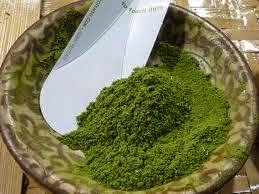Germinating Seeds for Personal Use
There are several methods of germinating seeds. Some methods may work better depending on the microclimate. We are sure that there are lots of you that have your own methods of germinating seeds so we will just tell you what we have done and what has worked for us and what has worked for growers around the world.
Moringa seeds have wings and are about the size of a large pea. Seeds don’t need sunlight in order to germinate. Here are some suggestions on germination.
- 1. Soak the seeds for 24 hours; the seed will imbibe the water it needs to germinate from this procedure. Remove the seeds from the solution.
- 2. Put the seeds in a plastic sandwich bag and store in a warm, dark place like a drawer or cabinet. Germination times range from 3-14 days. Do not add extra water to the bag.
- 3. Check them every two days. Once the seeds have broken loose from the winged shell, you will notice two shoots protruding from the seed.
- 4. Do not let the shoots get too long and thin as they may get fragile and break when handled. One of the shoots will have some ruffled growth at the extremity; this is the shoot that contains the first leaves (cotyledons) and should be the shoot exposed to the sun. Plant the seeds about ¾ inch beneath the soil surface with the ruffled extremity to the sun. Plant the sprouted seed(s) in a commercial band or a peat pot using a high quality potting soil. Sandy loamy soils will work well also. Use a pot that is at least 18 inches deep if this is the final home for the tree. Moringa loves the sun so make sure they get plenty. Although the tree is drought tolerant, they may be watered daily, just don’t allow the roots to get soaked for extended periods of time. If you live in a particularly hot zone, don’t expose the baby plants to all day sun. Keep and eye on them, they will tell you if they are getting distressed from too much sun, water or lack of food.
- 5.It is a good idea to use pots to get the trees started since you have more control over the care of the tree. Critters will eat the moringa babies if they can. We recommend that you let the potted plants grow at least 8 weeks or longer before transplanting to the ground. When transplanting try not to disturb the root system at all. Like many plants the roots are very vulnerable until they are established in the ground.
- 6. If using a plastic pot, before transplanting to the ground, use a long thin blade to loosen the soil from the inside edges of the pot. Turn the band or pot upside down to allow the entire plant and soil to slide out of the container. This prevents disturbing the roots. Have a hole already dug and gently place in the hole. If you are planting more than one tree, space the plants 7-10 feet apart for optimum access to the mature tree. The tree will branch out 3-4 feet from the trunk so this spacing will allow you to walk between trees and let the sunlight to do its job. Of course if you want a wind break, just plant them all at 1 foot intervals, like they do in Africa and India. Moringa is like any plant that appreciates plant food and fertilizers and ample supply of water
7. Don’t forget, you can always just put the seeds in the ground or a large pot and water. We have found that Moringa is sensitive to the volume of soil in which it begins its life cycle.























.jpg)

